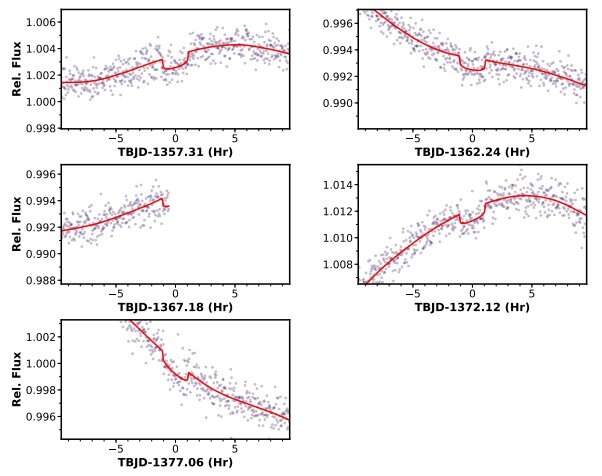December 7, 2020 report
Two young planetary systems detected by TESS

Using NASA's Transiting Exoplanet Survey Satellite (TESS), astronomers have discovered two new young planetary systems. They found that two stars not older than 320 million years, namely TOI-251 and TOI-942, are orbited by a mini-Neptune planet and two Neptune-sized exoplanets. The finding is reported in a paper published November 26 on arXiv.org.
TESS is conducting a survey of about 200,000 of the brightest stars near the sun with the aim of searching for transiting exoplanets. So far, it has identified over 2,400 candidate exoplanets (TESS Objects of Interest, or TOI), of which 82 have been confirmed so far.
Recently, a team of astronomers led by George Zhou of the Harvard-Smithsonian Center for Astrophysics (CfA) in Cambridge, Massachusetts, confirmed another three planets. Between August and December 2018, TESS observed two stars: TIC 224225541 (TOI-251) and TIC 146520535 (TOI-942), which resulted in the detection of transit signals in the light curves of these objects. The planetary nature of these signals was confirmed by follow-up photometric and spectroscopic observations using ground-based facilities.
"TOI-251 and TOI-942 are two field stars exhibiting photometric and spectroscopic signatures of youth, hosting transiting Neptunes that were identified by TESS observations," the astronomers wrote in the paper.
At a distance of some 324 light years away, TOI-251 is a G-type star about the mass of the sun with a radius of approximately 0.88 solar radii. The star has a rotation period of 3.84 days, effective temperature of about 5,875 K, and is estimated to be between 40 and 320 million years old.
TESS observations found that TOI-251 is orbited by a mini-Neptune planet every 4.94 days, at a distance of around 0.06 AU from the host. The exoworld, designated TOI-251b, is some 2.74 times larger than Jupiter, but its mass is estimated not to exceed that of the solar system's biggest planet.
TOI-942 is a K-type star about 498 light years away from the Earth. The star is about the size of the sun, but some 21% less massive. It has an effective temperature of 4,928 K and a rotation period of around 3.4 days. The age of TOI-942 is estimated to be within the range of 20 to 160 million years. According to the study, this star hosts two inflated Neptune-sized planets: TOI-942b and TOI-942c.
TOI-942b is about 4.81 times larger than Jupiter with a maximum mass of some 2.6 Jupiter masses. It orbits its parent star every 4.32 days, at a distance of about 0.05 AU from it. TOI-942c has a radius of 5.79 Jupiter radii and its mass is estimated to be below 2.5 Jupiter masses. The exoplanet has an orbital period of some 10.16 days and is separated from the host by about 0.08 AU.
Summing up the results, the astronomers noted that TOI-251 and TOI-942 are good examples of young planet-hosting field stars that can contribute significantly to characterizing the relationship between planet properties and their ages.
More information: Two young planetary systems around field stars with ages between 20-320 Myr from TESS, arXiv:2011.13349 [astro-ph.EP] arxiv.org/abs/2011.13349
© 2020 Science X Network





















